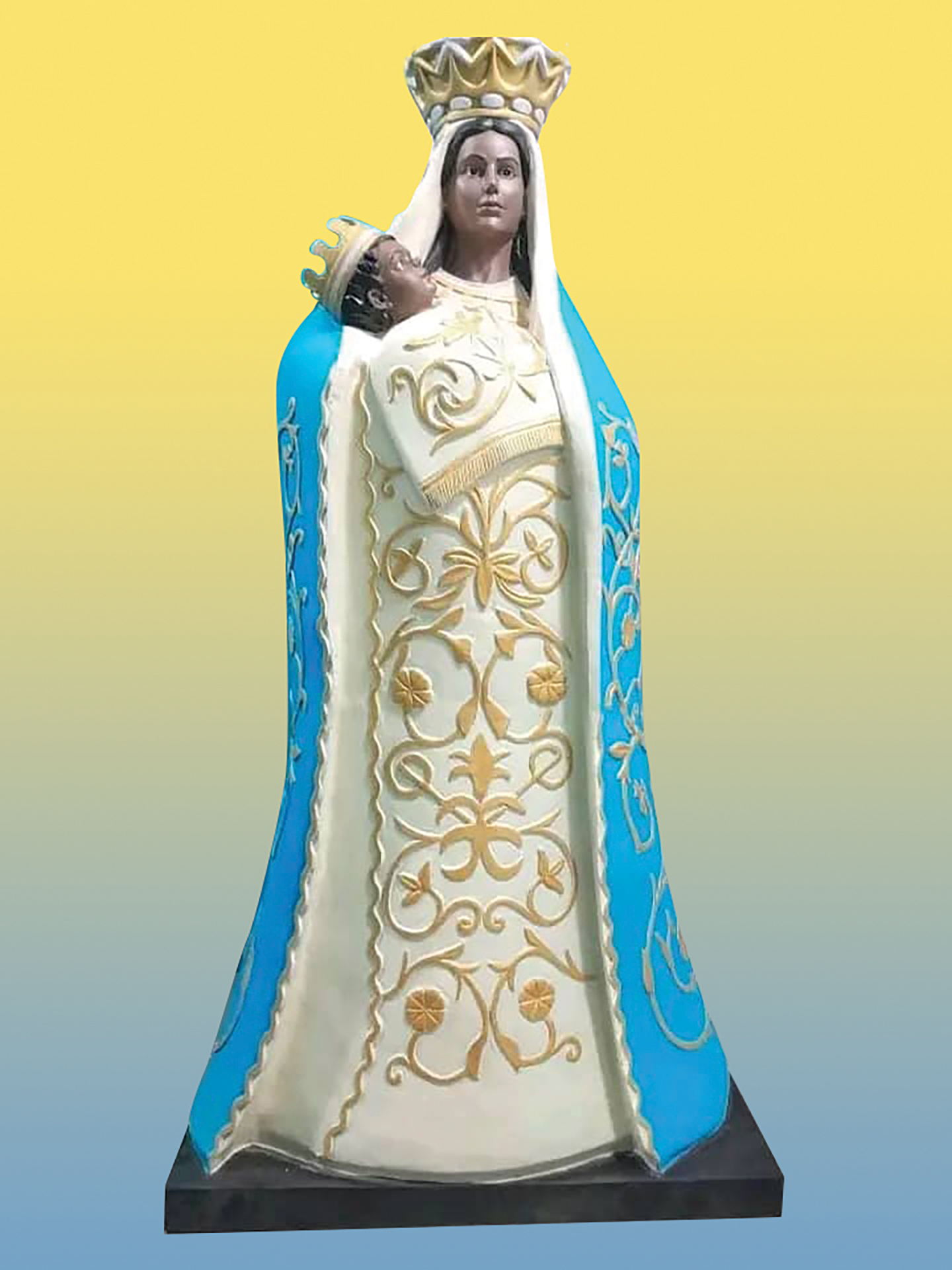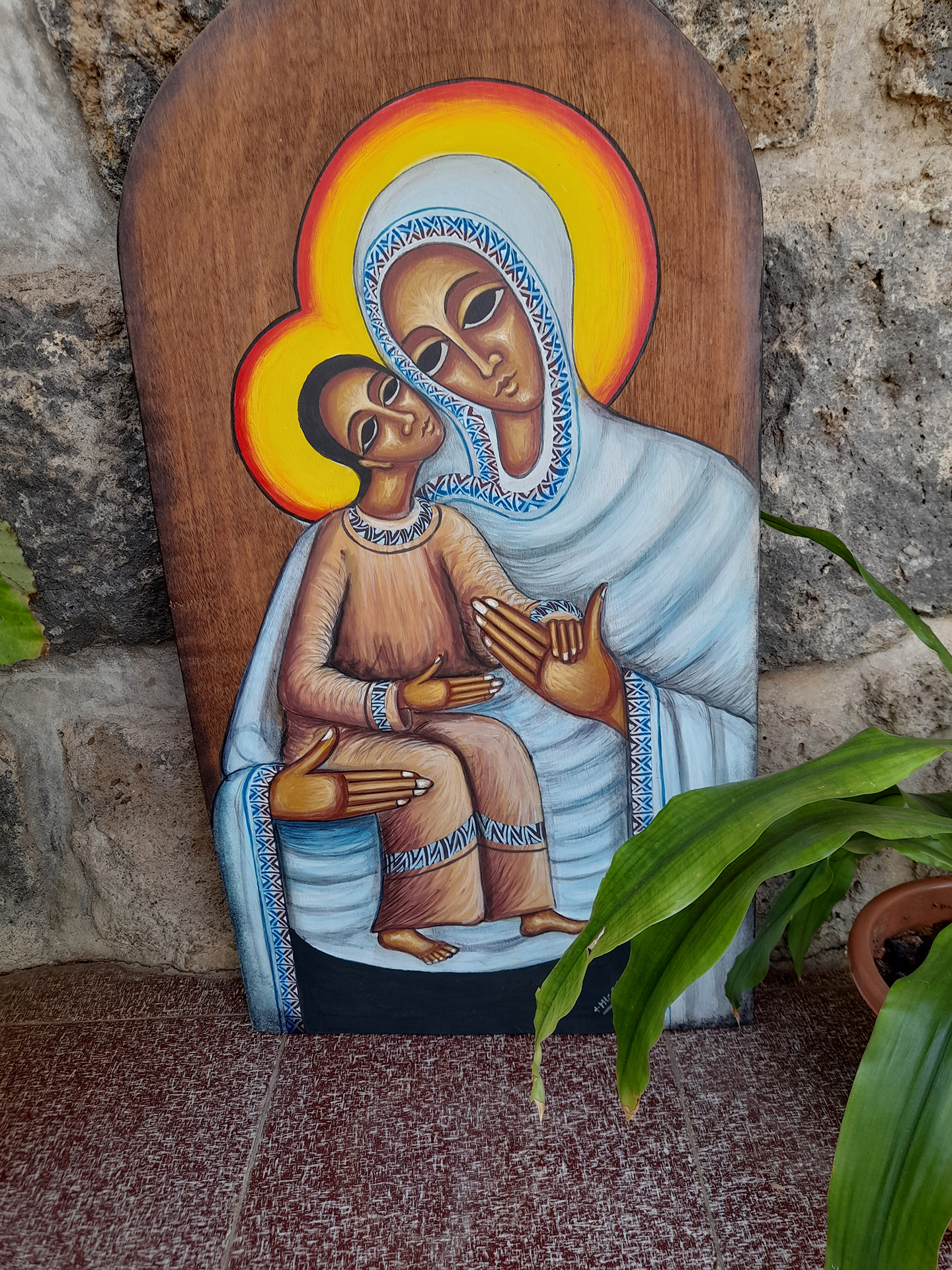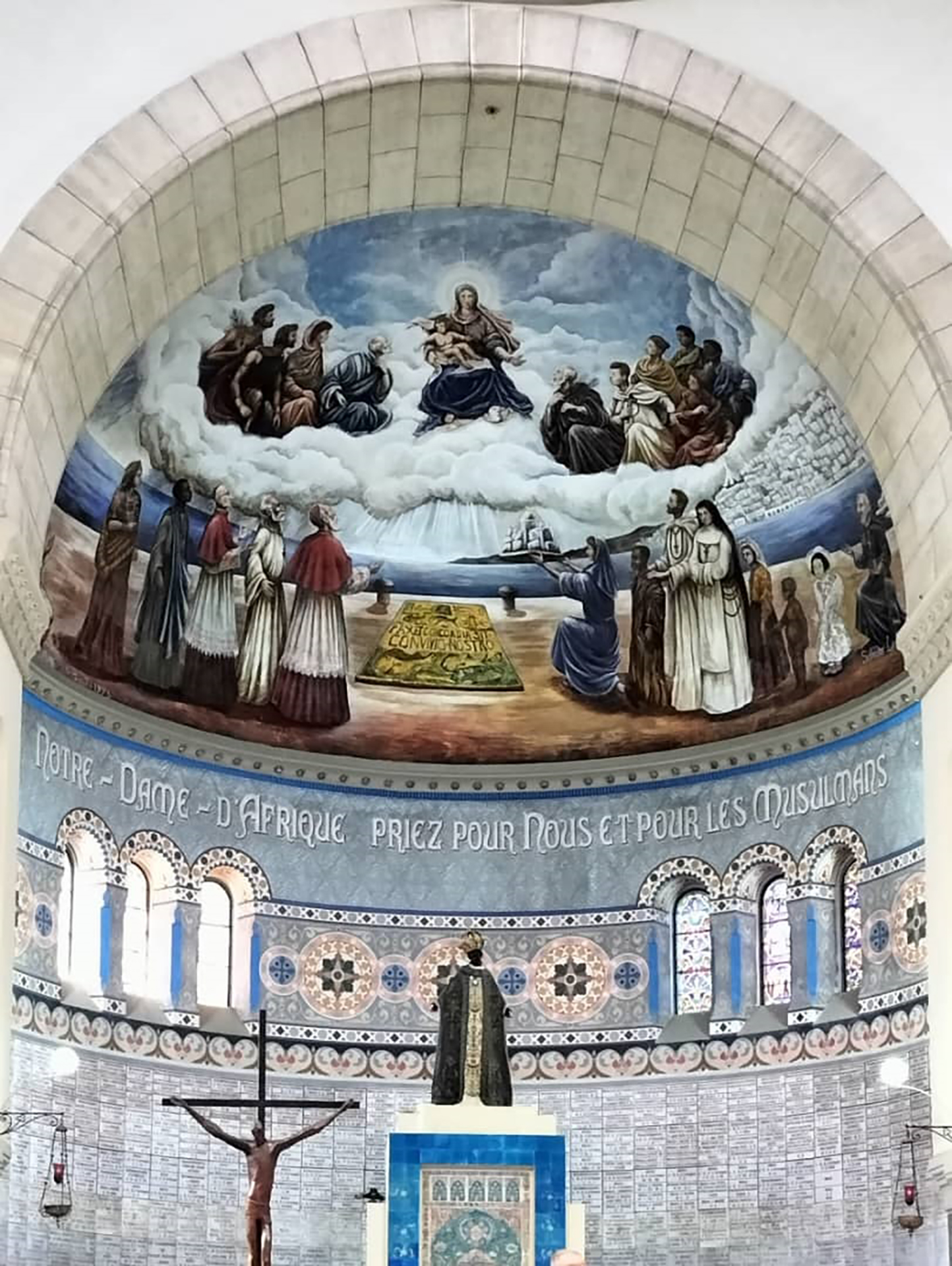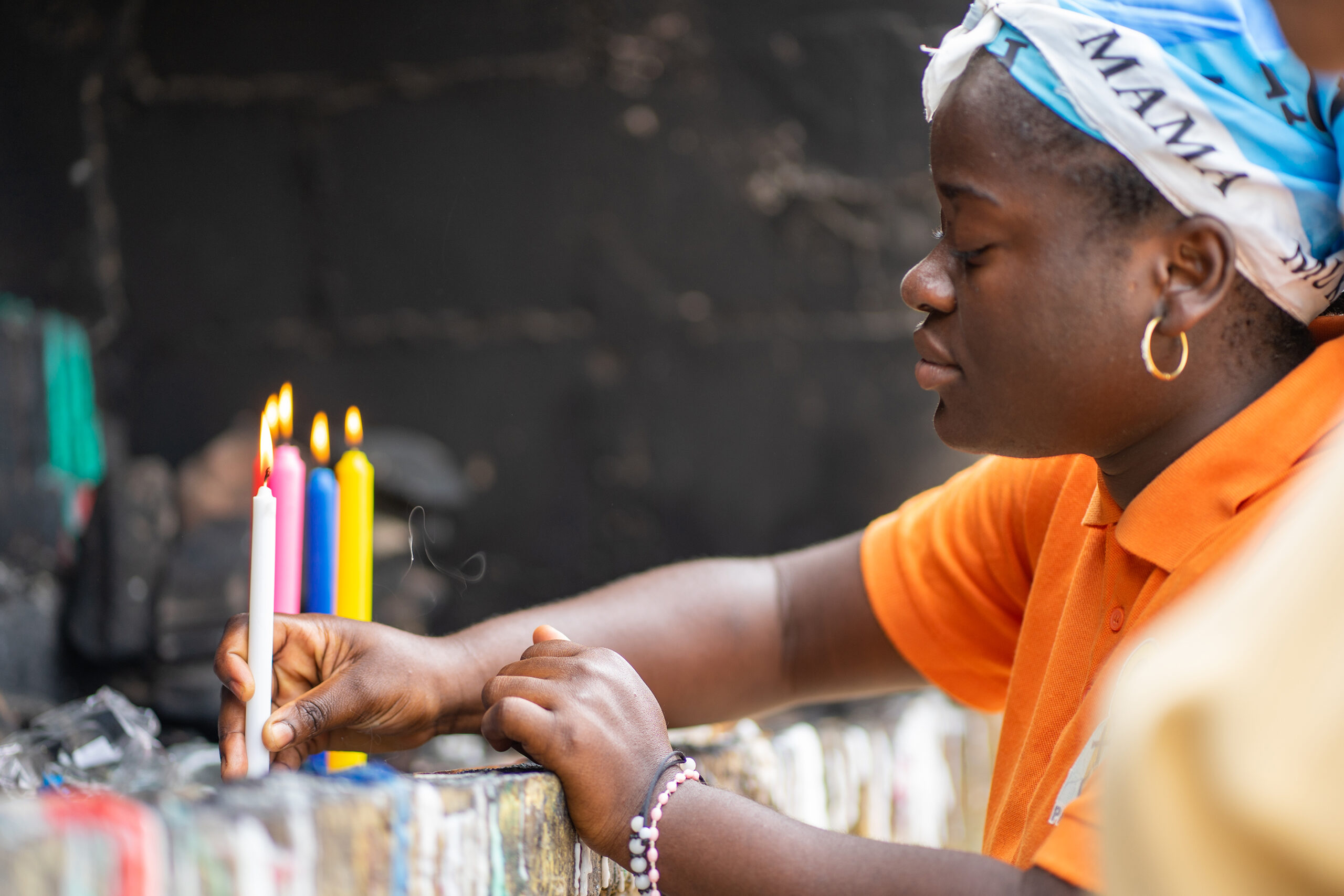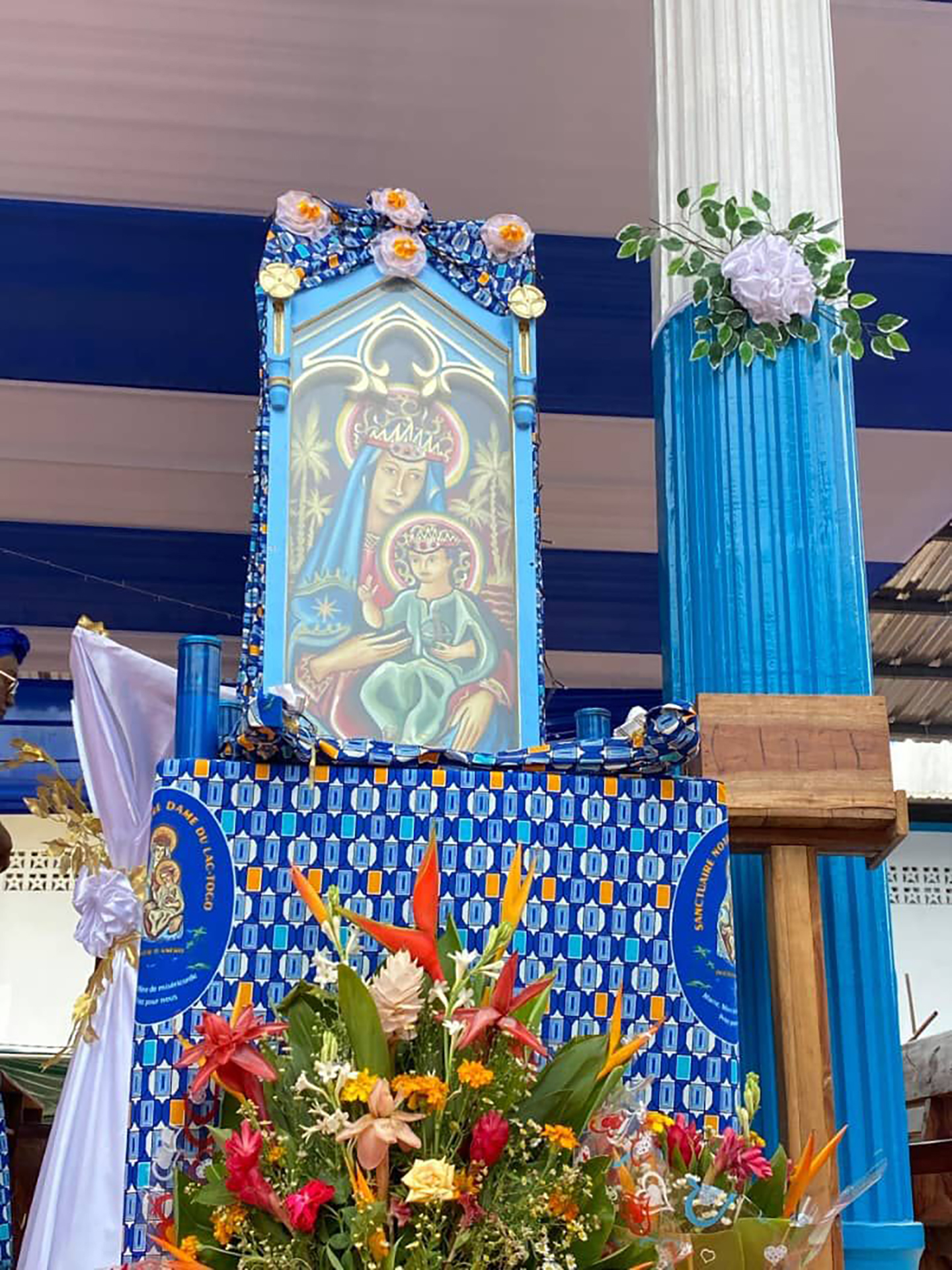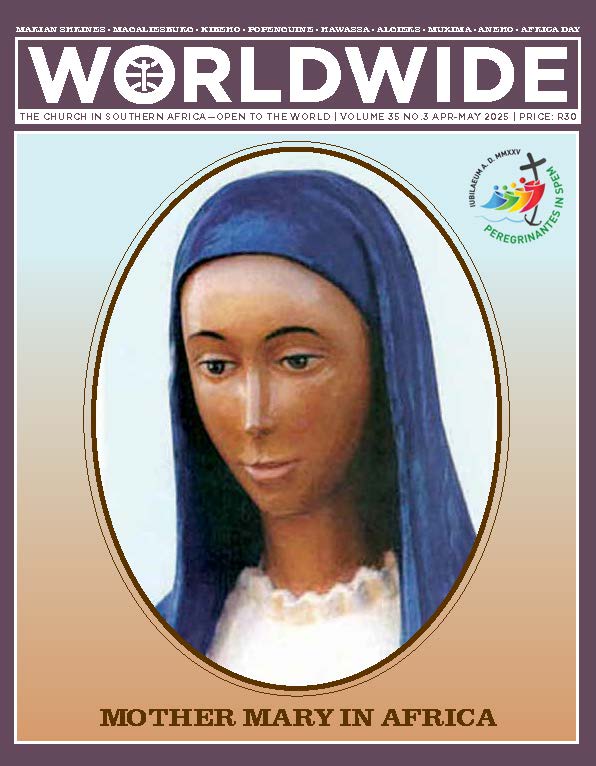
MOTHER MARY IN AFRICA
Head of the Statue of Mother Mary at Kibeho, Rwanda, carved by Marek Kowalski and based on the models of Jean Pierre Sibomana and Faustin Kayitana. In the statue, Mother Mary holds the Seven Sorrows Chaplet, a Marian devotion reintroduced to the Catholic community by Our Lady of Kibeho.
Kibeho is the only Marian apparition on African soil, officially recognized by the Church. Mother Mary’s requests for prayers preluded the 1994 Genocide.
SPECIAL REPORT • KIBEHO-RWANDA
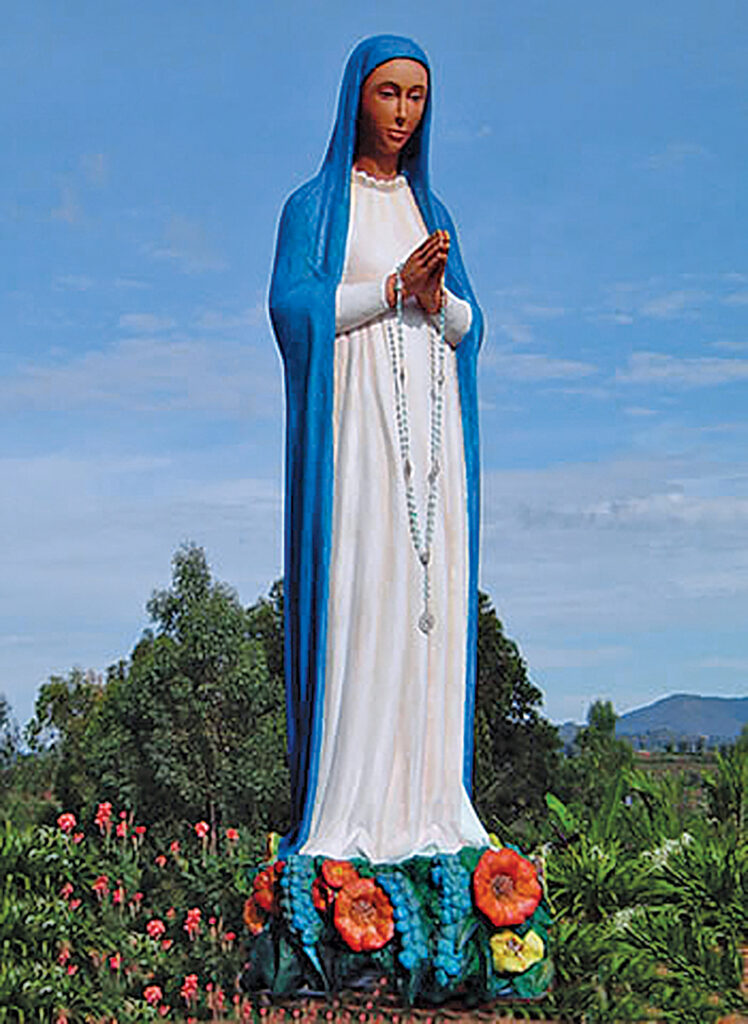
A SPIRITUAL BONFIRE IN THE HEART OF AFRICA
When we contemplate Marian apparitions and pilgrimage sites or shrines, our minds are generally drawn to the most famous ones such as Lourdes (France), Fatima (Portugal), and Guadalupe (Mexico). Yet, nestled in the charming hills of the southern part of Rwanda, we find the only approved Marian apparition site in Africa, ‘’Our Lady of Kibeho’’.
BY MARTHA RUTH KAYAGA | HUMAN RESOURCES PRACTITIONER, MAURITIUS
KIBEHO MEANING ‘’let it be’’ in the Kinyarwanda language, is a small parish in Gikongoro Diocese, in the Ecclesiastical province of Kigali in the Republic of Rwanda. Kibeho parish was founded in 1934 in the Nyaruguru district and is dedicated to Mary, Mother of God. Though the village has been known nationally for its poverty-stricken state, it has always been credited for its prevalent strong catholic faith and its enormous contribution towards vocations to priesthood and consecrated life in Rwanda.
Rwanda is also well known for hosting ‘Nyina wa Jambo’, or ‘Mother of the Word’ and the apparitions of Kibeho.
Rwanda, though widely branded for its beauty, as depicted by its nickname ‘’The Land of a Thousand Hills’’, is also well known for hosting ‘Nyina wa Jambo’, or ‘Mother of the Word’ and the apparitions of Kibeho, which occurred in the 1980s. These events captured the hearts of many and made history when heavens touched the earth in the eastern part of Africa, leaving an indelible mark on the African continent.
Apparitions
It all began on 28 November 1981 with the first seer, Alphonsine Mumureke, a student at Kibeho High School. She was filling water glasses in the student’s dining room, a daily practice, when she heard a soft, sweet voice calling her ‘Mwana’ or ‘child’. (Ruzindaza:19) Falling onto her knees, she asked who had spoken to which the Lady responded: “I am the Mother of the Word.” Several apparitions followed which raised suspicions among the students who assumed that Alphonsine was mentally ill or possessed by demons. (Ruzindaza: 21).
The growing furore caused Alphonsine to ask Our Lady if she could appear to other girls too, so that they would also believe. The Holy Mother of Jesus responded by appearing to Anathalie Mukamazimpaka, the second seer, on 12 January 1982. Several other apparitions occurred, among them one on 6 July 1982, during which the Blessed Mother said:
“My child, pray hard for the world because it is falling into a dark and bottomless ditch… I give you that mission of collaborating with me and save these fallen people” (Ruzindaza: 86)
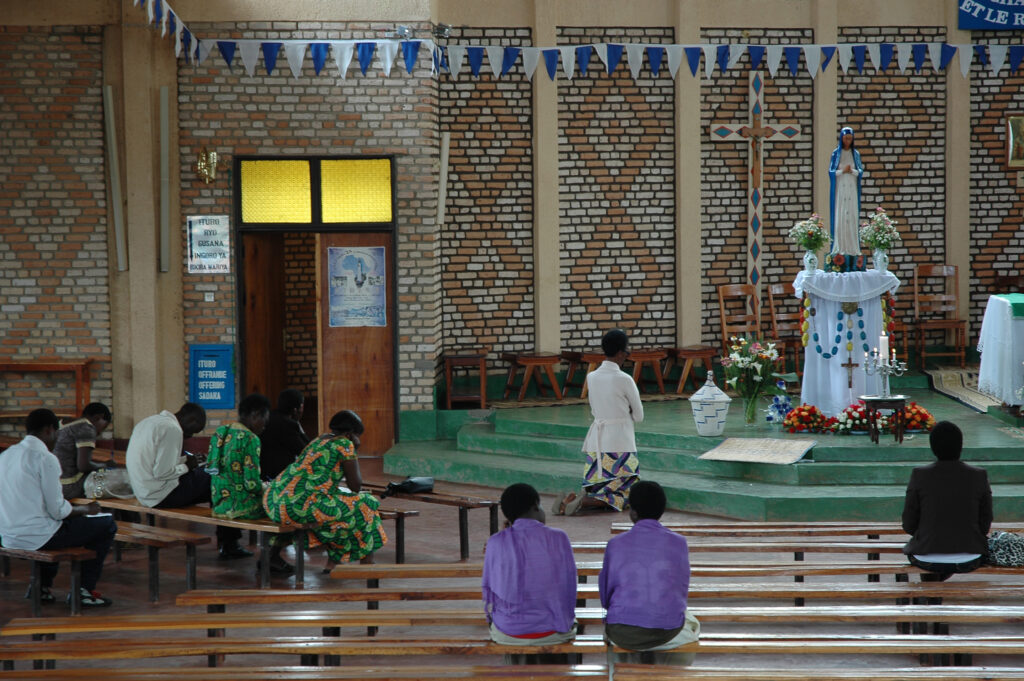
Some students were not happy with these events. Marie-Claire Mukangango, who later became the third seer, confronted and verbally attacked the seers, eventually even assaulting them physically. She was on the verge of being dismissed from school due to her bad behaviour. However, she was regarded as the ‘’Cherished of the Blessed Mother’’ by the Virgin Mary (Ilibagiza:18). On 1 March 1982, Marie-Claire fainted, and on the following day she heard a gentle voice telling her not to be afraid. On 31 May, the Mother of God appeared to her again, holding a black rosary called the ‘Rosary of Seven Sorrows’. Our Lady added:
“What I ask from you is to ask for forgiveness. If you recite this rosary by meditating, you’ll find in you the strength to return to God. These days, people no longer know how to ask for forgiveness. They continue to crucify the son of God.” (Ilibagiza: 19-20 & Ruzindaza: 127)
Marie-Claire asked: “Mother, do you want me to teach the whole world the Seven Sorrows Rosary? How would I do it?”. Our Lady responded: “My Child, my grace can do all things”. With this the Mother of Jesus instructed her to propagate this chaplet.
On 15 August 1982, Solemnity of the Assumption, the visionaries experienced a public and joint apparition, also considered the longest of all, as it lasted for hours. As news had already spread across the borders of Rwanda, pilgrims headed to Kibeho, searching for miracles and hoping for cures. However, joy turned into sorrow when the visionaries saw Our Lady weeping. They too, started crying and screaming, as they had visons of beheaded people and rivers flowing with blood. This was to become the 1994 Rwandan Genocide.
Church recognition and Popes’ pronouncements
A decade after the 1st apparition, in September 1990, the first and only Papal visit to Rwanda occurred by Pope John Paul II. Eleven years after that visit, in 2001, the messages and the apparitions of the Blessed Virgin Mary (B.V.M) in Kibeho were formally recognised by Pope John Paul II by means of a letter that was read by Bishop Misago, solidifying Kibeho’s importance in the catholic community of Rwanda and in Africa as a whole.
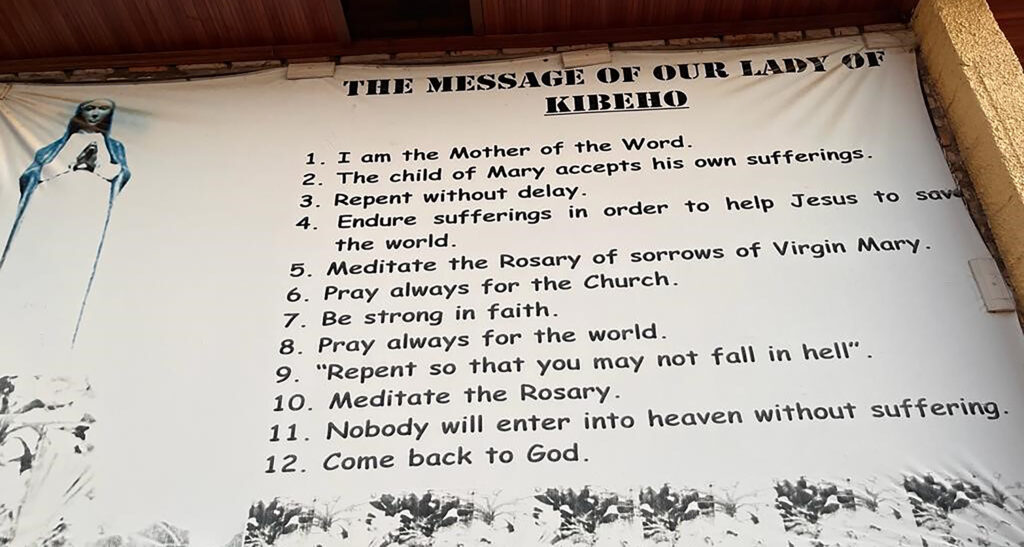
On the 25th anniversary of the first apparition, in November 2006, Pope Benedict XVI declared plenary indulgences to pilgrims who visited Kibeho during the Jubilee year.
On 4 April 2014, during the ‘ad limina visit’ of the Rwandan Episcopal conference to Rome, Pope Francis commended them to the maternal protection of the Virgin Mary and added:
‘’I sincerely hope that the Shrine of Kibeho might radiate even more the love of Mary for her children, especially the poorest and most injured, and be for the Church in Rwanda and beyond, a call to turn with confidence to Our Lady of Sorrows, who accompanies each of us on our way and we might receive the gift of reconciliation and peace.’’ (Catholic news agency)
Messages of Kibeho
The Blessed Mother of God delivered several messages of peace, reconciliation, and the importance of prayer. They have been summarised in the picture below:

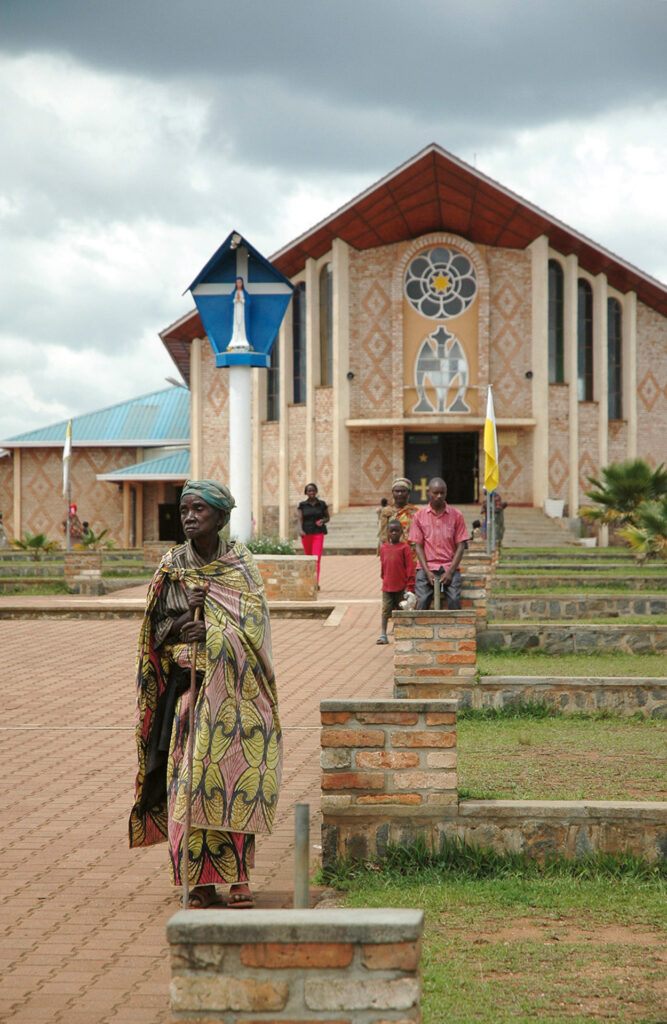
Seven sorrows of Mary
During the Kibeho Apparitions, the Blessed Virgin Mary, through Marie-Claire, revived the devotion of ‘The Seven Sorrows Rosary and Chaplet’, —originally spread by St Bridget of Sweden in the 13th century—which eventually had become obsolete.
The rosary has seven swords that are linked to the seven bitter sorrows of the Mother of God. These are:
- The prophecy of Simeon. (Luke 2:34-35)
- The flight into Egypt. (Matthew 2:13-15)
- The Child Jesus lost in the temple, (Luke 2:41-51)
- Mary meets Jesus carrying the cross to calvary, (Luke 23:26-31)
- Mary stands at the foot of the cross. (John 19:25-27)
- Mary receives the body of Jesus in her arms. (John 19:38)
- The body of Jesus is placed in the tomb. (John 19:39 – 42)
Testimonies and pilgrimages
Several miracles have been associated to the intercession of Our Lady of Kibeho and to the seven sorrows’ chaplet. A few of them have been validated and also summarised by Immaculee Ilibagiza in her book (see references).
However, the greatest testimony of all is the great faith, devotion, and growth of the Catholic community in the heart of Africa and the African continent at large.
Today, the Kibeho Apparition site attracts thousands of pilgrims from Rwanda and neighbouring countries such as Uganda, Kenya, Tanzania, Burundi, and Congo, but also from all over the world. The most celebrated day is the annual feast of Our Lady of Kibeho, commemorated on November 28 each year, followed by the Solemnity of the Assumption of the B. V. M. Given its peaceful, calm, and serene atmosphere, the site is a destination for all kinds of pilgrims, including infants, the young and even the elderly.
As at any other catholic Marian apparition sites, pilgrims in Kibeho celebrate masses in various languages, prayer vigils, and processions. The site features a Seven Sorrows themed Shrine, an Apparition chapel (former Girl’s dormitory) and various secluded areas for the chain rosary, stations of the cross, perpetual adoration/benediction, private meditation, veneration, and prayers. To the west of the Apparition Chapel is the Cana Divine Mercy Centre of the Marian Fathers of the Immaculate Conception of the B.V.M., and a prayer and meditation amphitheatre with the biggest statue of the Divine Mercy, and a Bible Centre. To the East, we find the Christian radio station ‘Maria Rwanda’.
Kibeho was one of the most impacted regions of the Genocide. Thus, to the north of the Apparition site, is the Gikongoro Diocesan Church, where thousands were killed during the 1994 ordeal.
Kibeho stands as a testament to the power of faith and brings an enduring message of hope, peace and reconciliation. In a country that has faced immense challenges such as the 1990 famine, and the Genocide, the messages of Kibeho continue to inspire individuals to seek spiritual growth and foster a sense of community. As pilgrims’ journey to this holy place, they carry with them the hope that the lessons learned from the apparitions will contribute to a more peaceful and compassionate world.

